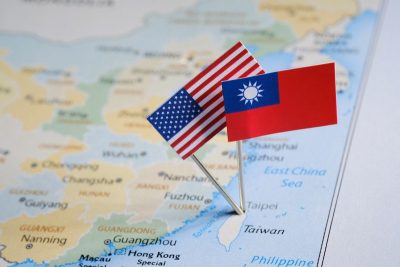Draft NDAA Includes $3 Billion in Annual Military Aid for Taiwan
Congress isn't sure if the funding for Taiwan will be approved by the appropriations committees

All Global Research articles can be read in 51 languages by activating the Translate Website button below the author’s name.
To receive Global Research’s Daily Newsletter (selected articles), click here.
Follow us on Instagram and Twitter and subscribe to our Telegram Channel. Feel free to repost and share widely Global Research articles.
***
A draft of the 2023 National Defense Authorization Act (NDAA) includes billions in military aid for Taiwan, but Congress isn’t sure if the funds will be approved, Defense News reported on Thursday.
The funding includes $10 billion in the State Department’s Foreign Military Financing (FMF) program over five years, giving Taiwan $2 billion each year until 2027. It also includes $1 billion in annual presidential drawdown authority, which would allow the US to send Taiwan arms directly from US military stockpiles, the most common method the US is using to arm Taiwan.
While the funding for Taiwan is included in NDAA, members of Congress aren’t sure if it will get past the appropriations committees. Lawmakers say that in order to get the funds for Taiwan, cuts need to be made elsewhere and Democratic appropriators aren’t sure if they want to do that.
Democrats are particularly concerned about cutting the State Department’s budget to fit in the FMF for Taiwan, and it’s not clear if they would be willing to increase the department’s top line.
The State Department’s 2022 budget was $55 billion, including $6 billion for FMF, which Taiwan does not yet receive. The plan to give the island $2 billion in FMF would make it the second-highest recipient of the program behind Israel, which receives $3.3 billion in FMF each year.
But lawmakers on both sides of the aisle are keen to begin unprecedented military aid for Taiwan, which will be a highly provocative move toward China, and will likely find a way. The Washington Post first reported the plan to give Taiwan $3 billion in annual military aid and cited congressional aides who said if the funds aren’t appropriated, the White House could ask Congress to approve the aid as emergency funding as it has been doing for Ukraine.
The $10 billion in FMF is an effort to incorporate into the NDAA a piece of legislation known as the Taiwan Policy Act. The bill was approved by the Senate Foreign Relations Committee back in September and included $6.5 billion in FMF, which was raised to $10 billion.
The effort to arm Taiwan comes as China has been warning the US against increasing support for the island. Before voting on the Taiwan Policy Act, Sen. Mitt Romney (R-UT) recognized how China would view the legislation. “We’re doing something that’s highly provocative and bellicose,” he said before voting in favor of the bill.
*
Note to readers: Please click the share buttons above. Follow us on Instagram and Twitter and subscribe to our Telegram Channel. Feel free to repost and share widely Global Research articles.
Dave DeCamp is the news editor of Antiwar.com, follow him on Twitter @decampdave.
Featured image is from OneWorld

